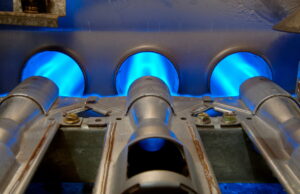It’s a cold day in Louisiana and your gas furnace isn’t working. You’re wondering what could possibly be wrong. The symptoms are that the furnace turns on but then turns off after just a few seconds. It’s not short cycling because the furnace doesn’t stay on that long. What could it be?
For this unusual situation, the likely culprit is the flame sensor. Although you may not have experienced this before, it’s a common issue with gas furnaces. There may be a simple solution that’ll require calling us for furnace repair in Hammond. You should never attempt to work on your gas furnace yourself. Let’s dive into what a flame sensor does and what can go wrong.
What Is a Flame Sensor?
When a furnace starts a heating cycle, gas flows to the burners where the ignition system lights them. If the ignition system fails to work for whatever reason, gas will accumulate in the combustion chamber. As you can imagine, this is a major safety issue.
The aptly named flame sensor is a safety feature that can detect if the burners have ignited. If the flame sensor doesn’t detect flames, it will tell the furnace control board to turn off the gas, preventing it from accumulating in the combustion chamber.
Now you can begin to see why a furnace that shuts off in a matter of seconds is likely related to the flame sensor. The flame sensor can simply start malfunctioning and think that the burners haven’t ignited and shut the gas off anyway, causing the burners to go out.
Sometimes the flame sensor is dirty and grimy. The flames from the burners will go out when they can’t draw enough oxygen for combustion because of a buildup of grime and dirt. This is a common issue we see in furnaces that haven’t received maintenance in a while. Cleaning these burners and checking the flame sensor is part of the maintenance process.
That doesn’t mean you should grab a rag and try and clean the sensor yourself! It’s a fairly involved process. The furnace will need to be turned off, the gas line shut down, and the flame sensor needs to be removed and disassembled. The working parts are cleaned of dirt and grime. Then it’s reassembled and put back in place.
So what other some other symptoms of a faulty flame sensor? Here are some signs.
- If the color of the flame firing the burners is yellow, the gas isn’t fully burning away.
- The flue lines are rusted/corroded
- The flame sensor is visibly dirty and grimy
- Your utility bills have gone up with no correlation in usage
- Detectable exhaust smells throughout your home
- You’re constantly making adjustments to the thermostat setting
- A crack is visible on the porcelain exterior of the flame sensor
- The furnace makes a clicking sound as the sensor tries to ignite the gas and fails.
Flame sensor issues must be handled by an HVAC professional like us.
When you need it done right contact Professional Heating & Air.

